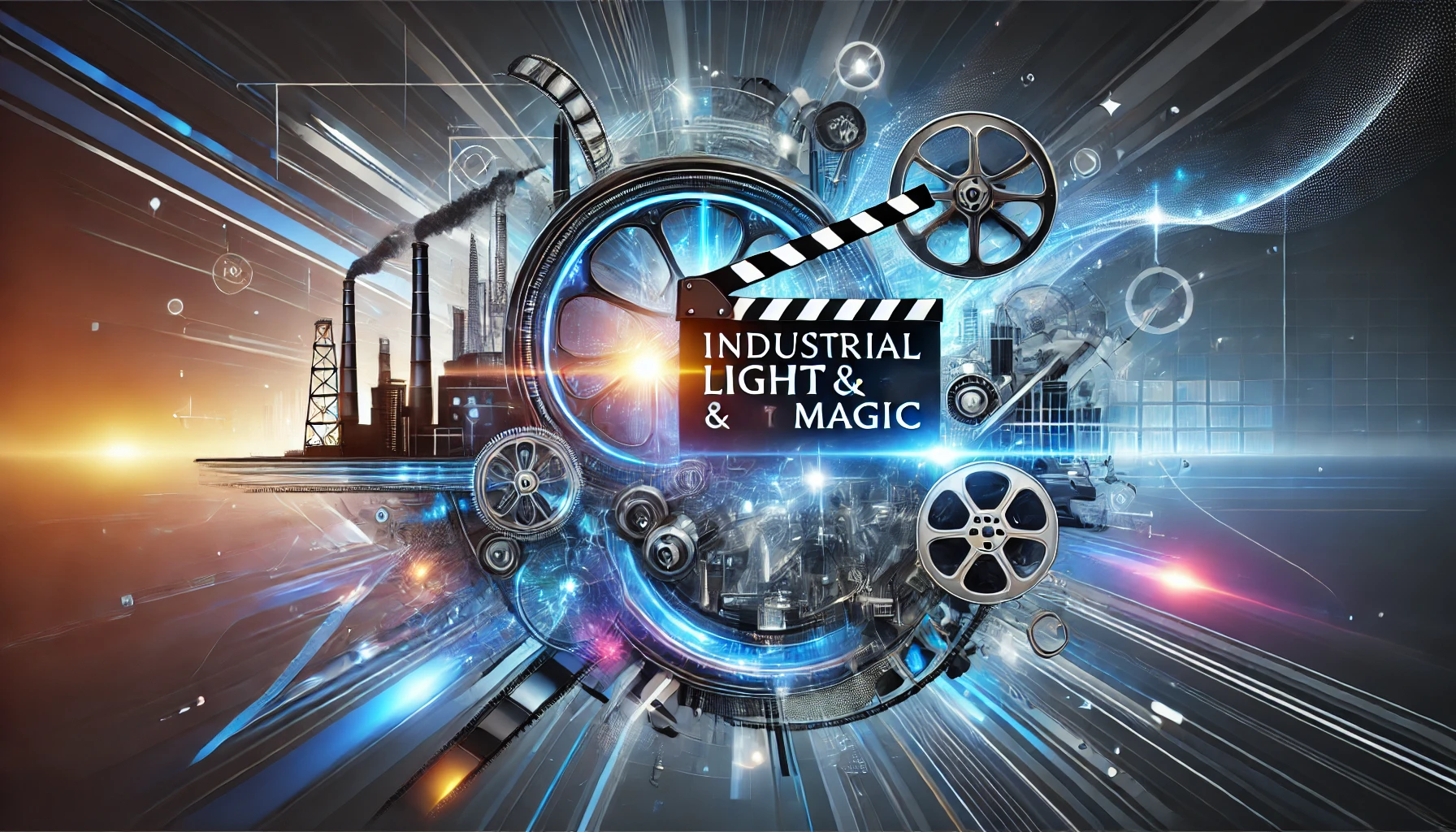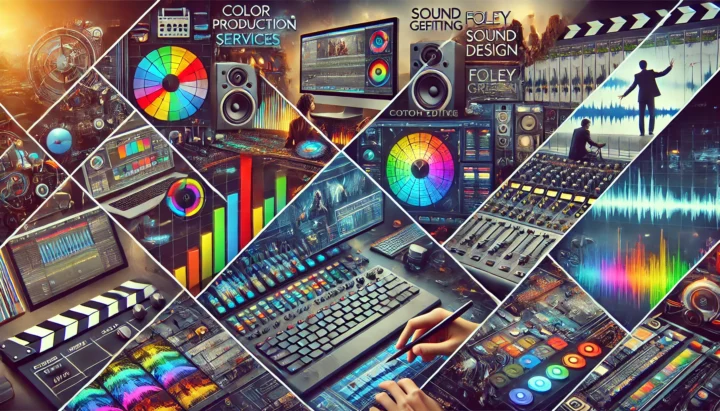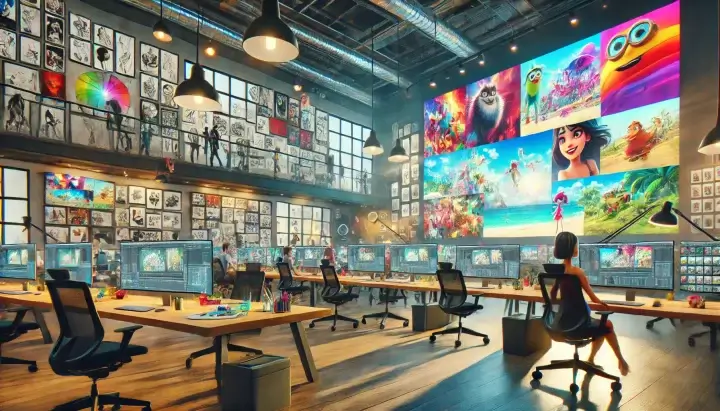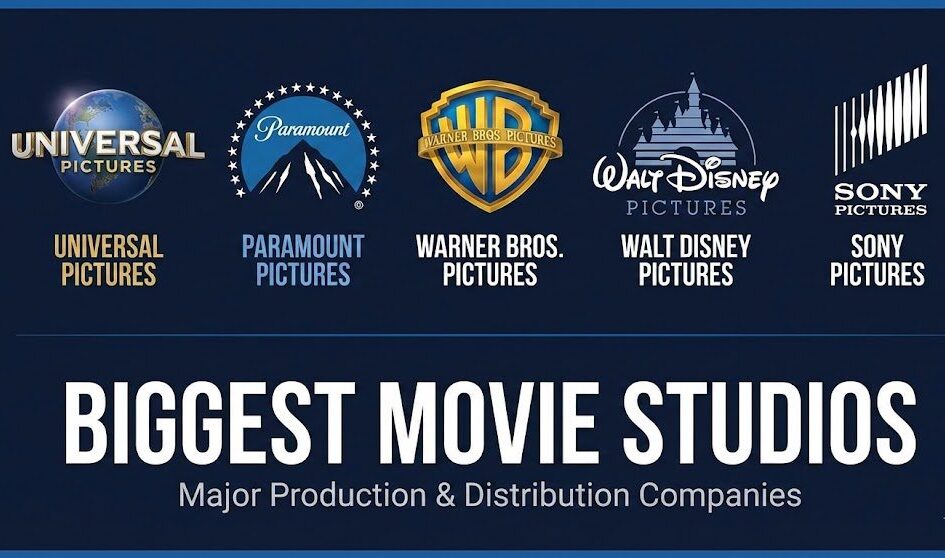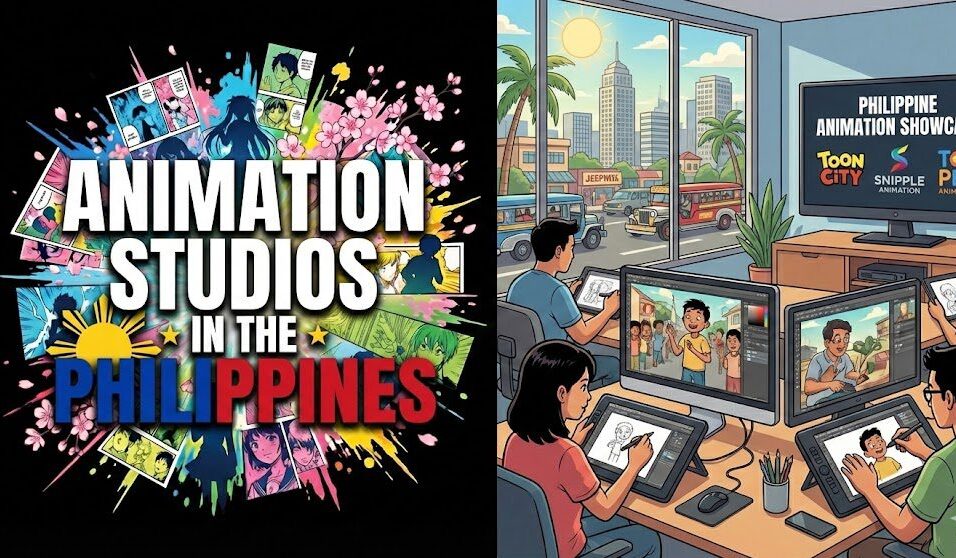Introduction
In the world of filmmaking, post-production audio plays a pivotal role in how a story is told. Elements like ADR, Foley, and audio mixing are critical to ensuring that every sound enhances the narrative and delivers an immersive experience for viewers. Whether you’re a filmmaker working on a feature film or an indie producer handling a podcast, mastering these elements can significantly improve the overall quality of your production.
In this article, we’ll dive deep into the core aspects of post-production audio, focusing on ADR, Foley, and mixing. You’ll discover the importance of these processes, learn about the common challenges, and understand how to choose between outsourcing and in-house production.
Key Takeaways
| Topic | Insight |
| Importance of Post-Production Audio | Understand the crucial role of ADR, Foley, and mixing in enhancing a film. |
| Tools and Techniques | Discover essential software and techniques for high-quality audio production. |
| Challenges and Solutions | Learn how to troubleshoot common issues like sync problems and background noise. |
| Outsourcing vs In-House | Find out when to outsource post-production audio and when to keep it in-house. |
| Vitrina’s Role | How Vitrina helps connect filmmakers with the best post-production audio services. |
Table of content
- Introduction
- Understanding Post-Production Audio
- ADR (Automated Dialogue Replacement) in Post-Production
- Foley Sound Design: Bringing Scenes to Life
- The Art of Audio Mixing in Post-Production
- Common Challenges in Post-Production Audio
- Outsourcing vs. In-House: Finding the Right Balance
- Top Tools and Software for Post-Production Audio
- Key Takeaways
- FAQs
Struggling with ADR or Foley Sound?

1. Understanding Post-Production Audio
What is Audio Post-Production?
Post-production audio involves all sound-related work that occurs after filming or recording is complete. This process includes sound editing, mixing, Foley, ADR, and more. The goal is to ensure the audio matches the visuals and enhances the storytelling. Proper audio post-production can make the difference between a good project and a great one.
2. ADR (Automated Dialogue Replacement) in Post-Production
What is ADR?
Automated Dialogue Replacement (ADR) is the process of re-recording dialogue in a studio to replace or enhance the original on-set recording. It’s used when on-set audio isn’t clear due to background noise or technical issues.
Best Practices for ADR
- Recording in a similar environment: Replicate the acoustics of the original scene to make the dialogue feel natural.
- Syncing audio perfectly: Ensure that the new dialogue aligns seamlessly with the actor’s lip movements.
- Using the right equipment: High-quality microphones and editing software are crucial for smooth ADR.
3. Foley Sound Design: Bringing Scenes to Life
What is Foley Sound?
Foley sound refers to custom-recorded sounds that simulate everyday noises, such as footsteps, door creaks, and clothing rustles. This helps create a sense of realism and enhances the viewer’s connection to the scene.
How Foley Artists Work
- Timing is critical: Foley artists match the sounds they create to the visual action on screen.
- Replicating natural sound: Using everyday objects, they can replicate anything from a squeaking chair to the sound of raindrops.
- Blending Foley with ambient sound: Foley sounds should integrate seamlessly with other elements, such as dialogue and background music.
4. The Art of Audio Mixing in Post-Production
What is Audio Mixing?
Audio mixing is the process of balancing all sound elements—dialogue, music, Foley, and other effects—into a single, cohesive track. The goal is to ensure that the final audio enhances the visual storytelling without overwhelming the audience.
| Mixing Element | Description |
| Dialogue | Ensuring clarity while balancing with background sound. |
| Foley and Sound Effects | Blending natural and enhanced sounds without overpowering the dialogue. |
| Music | Integrating the score in a way that complements the emotional tone of the scene. |
Best Practices for Mixing
- Use high-quality monitoring systems: Ensure accurate sound perception.
- Layer sounds strategically: Prioritize important audio cues like dialogue and make space for ambient sounds.
- Collaborate with the director: Keep the creative vision in mind while balancing the technical elements.
5. Common Challenges in Post-Production Audio
Common Audio Problems in Post-Production
- Audio Sync Issues: Sometimes, the recorded dialogue may not sync properly with the visuals, requiring adjustments in post-production.
- Background Noise: Unwanted noise, such as wind or crowd sounds, can interfere with dialogue clarity.
- Inconsistent Levels: Audio levels may fluctuate between different scenes, causing uneven sound quality.
Solutions for Audio Problems
- Audio Restoration Tools: Use tools like iZotope RX to clean up unwanted noise and enhance clarity.
- ADR and Foley: When background noise overwhelms the original recording, use ADR or Foley to replace or enhance sounds.
- Mixing Automation: Apply automation in your digital audio workstation (DAW) to balance levels across the project.
Read about overcoming post-production audio challenges for indie films.
Outsource Post-Production Audio Now!

6. Outsourcing vs. In-House: Finding the Right Balance
Outsourcing Post-Production Audio
Outsourcing audio post-production can save time and provide access to professional studios equipped with the latest technology. It’s an ideal solution for complex projects that require Foley artists, ADR specialists, and expert sound mixers.
| Option | Pros | Cons |
| Outsourcing | Access to top-tier studios and expertise | Can be expensive for indie projects |
| In-house | Complete control over the sound production | Requires skilled professionals and specialized equipment |
Learn about how outsourcing fits into post-production audio workflows.
7. Top Tools and Software for Post-Production Audio
Best Software for Post-Production Audio
Choosing the right software is critical for high-quality audio production. Here are the top tools used by professionals in 2024:
| Software | Best For |
| Pro Tools | Industry-standard for mixing and editing. |
| Adobe Audition | Great for sound design and podcast audio editing. |
| iZotope RX | Best for audio restoration and noise reduction. |
Pro Tools vs Adobe Audition
- Pro Tools is widely regarded as the industry standard for large-scale productions, offering powerful features for mixing and mastering.
- Adobe Audition is more user-friendly and is ideal for podcasts, indie films, and smaller projects.
Key Takeaway
- Post-production audio plays a critical role in enhancing the quality of any film or project.
- Elements like ADR, Foley, and mixing help ensure that the sound is clear, balanced, and immersive.
- Outsourcing audio post-production can provide high-quality results, but in-house production offers more creative control.
- Software like Pro Tools and Adobe Audition are essential tools for post-production audio, helping to balance, edit, and perfect the soundscape.
Frequently Asked Questions
ADR refers to re-recording dialogue, while Foley involves recording sounds to match the actions on screen.
Use tools like iZotope RX for noise reduction and consider ADR for replacing unusable dialogue.
Outsourcing is ideal for complex projects requiring high-end sound design and professional studios.
Pro Tools is preferred for larger productions, while Adobe Audition is a strong choice for smaller projects.
Vitrina connects filmmakers with expert audio professionals and studios for seamless post-production work.


